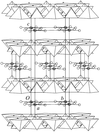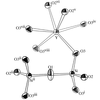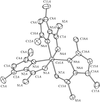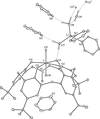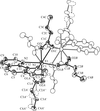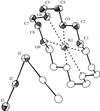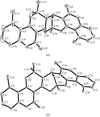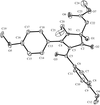issue contents
October 2003 issue

Cover illustration: A view of the extended structure of 2,5-dioxopiperazine-1,4-diacetic acid, with hydrogen bonds shown as dashed lines. H atoms not participating in hydrogen bonding have been omitted for clarity. See Ramos Silva, Matos Beja, Paixão, Sobral, Cabral & Rocha Gonsalves [Acta Cryst. (2003), C59, o562-o563].
inorganic compounds
Download citation


Download citation


The structure of [Co(H2O)4][VO(PO4)]2 consists of vanadyl phosphate layers containing corner-sharing VO5 square pyramids and PO4 tetrahedra. These layers are linked by interlayer CoO6 octahedra into a three-dimensional structure.
Download citation


Download citation


The crystal structures of two novel phyllosilicates have been characterized by single-crystal X-ray diffraction. The caesium phyllosilicate has silica sheets composed of four- and six-membered rings whereas the rubidium compound is described by six-membered-ring sheets.
Download citation


Download citation


The structure of the new synthetic thortveitite-type compound diyttrium disilicate, β-Y2Si2O7, has been determined by single-crystal X-ray diffraction and refined in the C2/m space group at 100 and 280 K.
metal-organic compounds
Download citation


Download citation


Download citation


Download citation


Download citation


Download citation


Download citation


Download citation


Download citation


Download citation


Download citation


Download citation


Download citation


Download citation


Download citation


Download citation


Download citation


Download citation


Download citation


Download citation


Download citation


Download citation


Download citation


Download citation


Download citation


Download citation


Download citation


Download citation


Download citation


Download citation


organic compounds
Download citation


Download citation


Download citation


Download citation


Download citation


Download citation


Download citation


Download citation


Download citation


Download citation


Download citation


Download citation


Download citation


Download citation


Download citation


Download citation


Download citation


Download citation


Download citation


Download citation


Download citation


Download citation


Download citation


Download citation


Download citation


Download citation


Download citation


Download citation


Download citation


Download citation


Download citation


Download citation


Download citation


Download citation


Download citation


Download citation


Download citation


Download citation


Download citation


Download citation


Download citation


Download citation


Download citation


Download citation


Download citation


Download citation




 journal menu
journal menu











